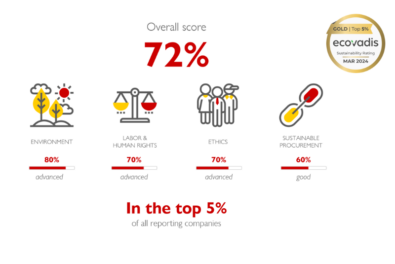Procurement plays a vital role in keeping a business functioning. The buying team is not only responsible for acquiring the products and services an organisation needs to operate, but also for ensuring that spending is properly monitored.
Currently, more than a third of organisations still rely on paper-based procurement that involves large amounts of manual processing. Copies of quotes and invoices must be shared with several team members, while suppliers need to be kept in the loop with phone calls and emails.
This manual approach eats into your team’s time and introduces room for errors to creep in. Many of these issues can be curtailed – and often completely removed – by instead moving to a digital system. Not only is a digital process faster than manual procurement, with research showing that digital procurement can slash the time spent on the procurement process by as much as 80%, the advantages it provides can also offer greater insights into spending and improve relations with suppliers.
To explore this in more detail, we will look at five of the biggest reasons for digitising your procurement processes.
Dispense With the Paperwork
Manual procurement involves a lot of paperwork and form-filling. It’s been estimated that buyers spend as much as 31% of their time on manual processes, representing a huge amount of time that purchasers could spend on more productive tasks.
Moving the process to a digital platform can reduce these time-consuming tasks to a handful of clicks. With efficient automation in place, it may not even require that. Documents can be dispatched to suppliers automatically, and approvals sent back to the relevant parties without the need for making phone calls or sending emails.
Accelerate Approvals
According to the Chartered Institute of Procurement and Supply (CIPS), more than 90% of organisations eyeing digitalisation are primarily motivated by “decreased operational costs and increased efficiency”. A move away from manually created contracts, RFPs, and other documents and toward an online platform can allow documents to be shared automatically throughout the approvals chain, cutting down on time spent waiting for sign-off.
On top of this, an automated system can share information across the organisation without the need for employees to enter information manually. Several elements of the process can be handled automatically, allowing orders to quickly be placed and confirmed.
Rapid approval doesn’t just make life easier and more convenient for the employees making purchases, it can also help to boost the organisation’s overall agility and responsiveness.
Eliminate Errors
Even the most highly skilled purchasing administrators aren’t perfect and manually entered data can sometimes come with typos, missing information, or any number of minor mistakes. Researchers estimate that data entry errors in procurement and the supply chain cost businesses billions of dollars every year.
A move to a digital procurement platform can reduce these errors, however. Documents can be automatically populated with the correct figures and information, without the risk of an errant keyboard stroke causing unnecessary delays. Digital procurement systems ensure that the system data is consistent and that all the necessary information is where it needs to be.
Surface Data
The procurement process generates a vast amount of data, ranging from spending figures to the time spent on negotiation and delivery.
This data is an invaluable tool in an organisation’s efforts to find savings, but a paper procurement process can mean that the information is difficult to access. Research company IHS Markit has found that 63% of supply-chain professionals “lack the necessary data” to make cost-saving decisions.
However, when procurement is moved to a digital system, all this information is only ever a handful of clicks away. Everything from spending trends to order histories can be surfaced without the need for data entry or searching through old spreadsheets. Reports that once needed to be manually generated can be provided automatically.
Easy access to this information via intuitive and interactive user dashboards can help organisations make sense of their spending and plan the most efficient way to purchase.
Keep Suppliers Informed
Maintaining positive relationships with suppliers is a key part of the procurement process, and this involves keeping them in the loop at all times. Suppliers want to know where your latest purchase stands in the approvals process, whether to expect more orders and when they’re going to be paid.
According to a survey carried out by supplier experience company HCIX, the top issue standing between suppliers and organisations is the time needed to resolve queries. Traditionally, this involves multiple phone calls and voicemails between suppliers and buyers. Organisations with a digital procurement process can automatically share information with their suppliers to reduce the strain and increase visibility into the process. Both supplier and procurer can easily stay up to date on the purchase status, and easily share information in the event of delays or other potential pitfalls.
Conclusion
Efficiency and accuracy lie at the heart of the procurement process, and both are aided by a move towards digitisation and automation.
Embracing the ability to automate common procedures allows the procurement team to spend more time innovating and finding fresh ways to create value for the organisation, which is made easier by the ability to quickly access spending data.








